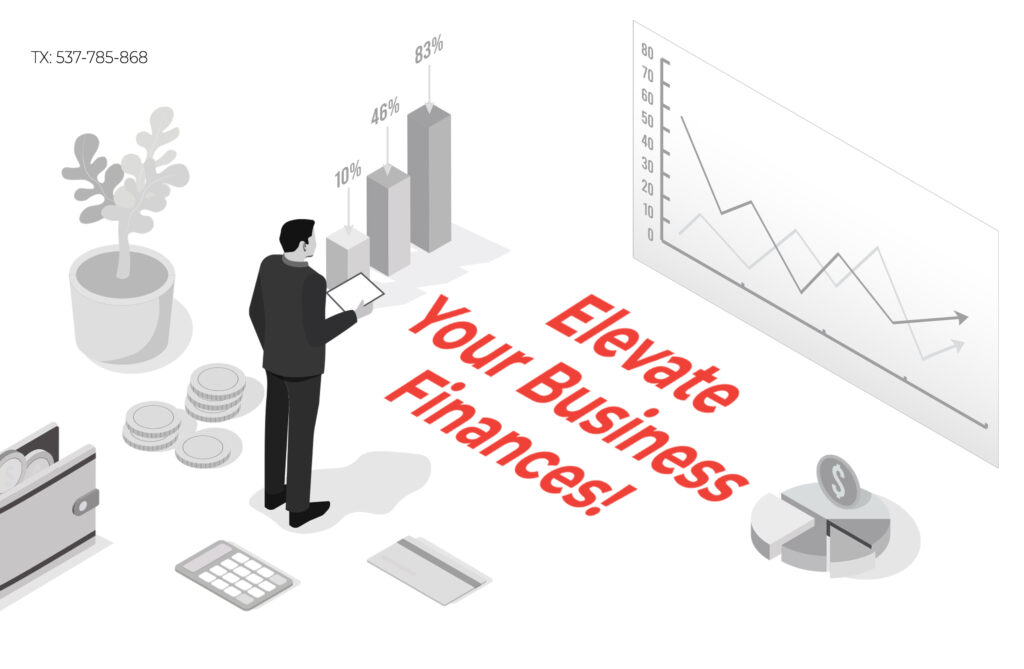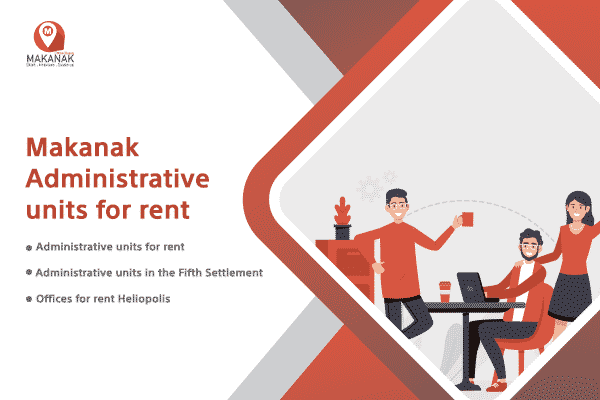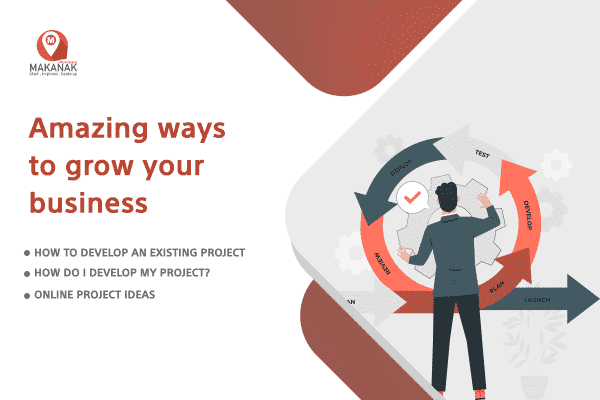introduction:
In the dynamic landscape of small business operations, mastering the art of budgeting is a critical factor that can make or break success. Efficient budgeting not only ensures financial stability but also provides a roadmap for strategic growth. If you’re a small business owner looking to enhance your financial acumen, here are some invaluable budgeting tips to guide you on your path to success.
1. Set Clear Financial Goals:
Begin your budgeting journey by establishing clear financial goals for your business. Whether it’s expanding your product line, increasing market share, or improving cash flow, having well-defined objectives allows you to align your budget with your overarching business strategy.
Setting clear financial goals is the foundational step in the budgeting process for small businesses. Here’s a more detailed breakdown of this crucial aspect:
Why Set Clear Financial Goals:
- Strategic Alignment: Clear financial goals ensure that your budget is not just a routine exercise but a strategic tool aligned with your business objectives.
- Focus and Direction: They provide focus and direction, guiding your financial decisions towards achieving specific outcomes.
- Motivation and Accountability: Well-defined goals motivate both you and your team. They create a sense of purpose and accountability, driving everyone to work collectively towards shared financial objectives.
- Resource Allocation: Establishing goals helps in prioritizing resource allocation. Whether it’s allocating funds for marketing campaigns, technology upgrades, or talent acquisition, goals assist in making informed decisions.
Types of Financial Goals:
- Revenue Growth: Aim to increase your revenue by a certain percentage, whether through expanding your customer base, introducing new products/services, or penetrating new markets.
- Cost Reduction: Identify areas where cost efficiency can be improved. This could involve renegotiating contracts, optimizing operational processes, or finding more cost-effective suppliers.
- Cash Flow Improvement: Enhance your cash flow by setting goals related to reducing payment cycles, optimizing inventory management, or securing favorable payment terms from clients.
- Profit Margin Enhancement: Focus on improving profit margins by increasing prices, reducing variable costs, or introducing higher-margin products/services.
- Market Share Expansion: If market share is a key metric, set goals for capturing a specific percentage of your target market through strategic marketing and sales initiatives.
- Debt Management: If applicable, manage and reduce debt. Set goals for decreasing outstanding loans or credit balances, improving your business’s financial health.
How to Set SMART Financial Goals:
Ensure your financial goals are SMART:
- Specific: Clearly define what you want to achieve. For example, instead of a vague goal like “increase revenue,” specify “increase annual revenue by 15%.”
- Measurable: Establish metrics to quantify your goals. Use figures and percentages, making it easier to track progress and success.
- Achievable: Ensure your goals are realistic and attainable within your business’s current capabilities and market conditions.
- Relevant: Align goals with your overall business strategy. They should contribute directly to the growth and sustainability of your business.
- Time-Bound: Set deadlines for achieving each goal. This adds a sense of urgency and helps in monitoring progress over specific periods.
By setting clear and SMART financial goals, your budget becomes a strategic tool that not only addresses immediate financial needs but also propels your business towards long-term success and sustainability.
2. Track Every Expense:
Detail is key when it comes to budgeting. Keep meticulous records of every expense, no matter how small. Categorize expenditures to identify areas where costs can be optimized. This granular approach provides a comprehensive view of your financial landscape.
In the realm of budgeting for small businesses, the devil truly lies in the details. Here’s a closer look at the imperative of tracking every expense with meticulous precision:
1. Comprehensive Financial Landscape:
- Granular Record-Keeping: Document every expense meticulously, leaving no transaction unnoticed. Whether it’s a significant investment or a minor purchase, each detail contributes to a comprehensive financial landscape.
- Categorized Expenditures: Take categorization to the next level. Classify your expenses into specific categories, such as operational costs, marketing expenditures, or overhead expenses. This breakdown offers insights into different facets of your business spending.
2. Identifying Areas for Optimization:
- Cost Analysis: A detailed record allows for a thorough cost analysis. Identify areas where costs can be optimized or reduced without compromising operational efficiency. This might include renegotiating contracts, seeking alternative suppliers, or finding more cost-effective solutions.
- Budgetary Control: Tracking every expense provides a real-time view of your budget. This control helps prevent overspending in specific areas, ensuring that your financial resources are allocated judiciously.
3. Strategic Decision-Making:
- Informed Financial Decisions: Meticulous records serve as a valuable resource for making informed financial decisions. Whether you’re considering a new investment, expansion, or cost-cutting measures, your detailed expense tracking equips you with the necessary data.
- Forecasting and Planning: Use historical expense data to forecast future expenditures. This aids in strategic planning, allowing you to allocate resources effectively and anticipate financial needs.
4. Compliance and Auditing:
- Financial Transparency: A granular approach to expense tracking enhances financial transparency. This is especially crucial for compliance with accounting standards and regulations.
- Simplified Auditing: Should the need for auditing arise, detailed records simplify the process. Auditors can navigate through your financial history with ease, ensuring accuracy and compliance.
5. Financial Accountability:
- Team Accountability: If your business involves multiple stakeholders or teams, detailed expense tracking instills a sense of financial accountability. Teams can align their spending with the overall budget, fostering a culture of fiscal responsibility.
- Business Health Assessment: Regularly reviewing detailed expenses offers a holistic assessment of your business’s financial health. It unveils patterns, trends, and potential areas for improvement.
In essence, tracking every expense with meticulous care is not merely a financial chore; it’s a strategic imperative. It empowers your business with the insights needed for optimization, informed decision-making, and the assurance of financial health. As you navigate the intricate landscape of small business budgeting, remember: the details make all the difference.
3. Prioritize Essential Expenses:
Distinguish between essential and non-essential expenses. While it’s crucial to invest in the growth of your business, identifying and prioritizing core operational costs that vital functions remain sustainable, even during lean periods.
Let’s delve into the significance of this practice:
1. Distinguishing Essentials:
- Strategic Classification: Categorize your expenses into essential and non-essential categories. Essential expenses are those directly tied to the core functions and sustainability of your business. Non-essential costs, while potentially beneficial, can be adjusted during lean periods.
- Operational Vitality: Essential expenses are the lifeblood of your business operations. These are the costs that, if compromised, could impact your ability to deliver products or services, maintain quality standards, or meet regulatory requirements.
2. Sustainable Operational Functions:
- Ensuring Continuity: Prioritizing essential expenses ensures the continuity of your core operational functions. Even in challenging financial times, your business can sustain its fundamental activities, preventing disruptions to production, service delivery, or customer support.
- Risk Mitigation: By identifying and safeguarding essential expenses, you mitigate the risk of jeopardizing critical business functions. This strategic prioritization provides a safety net during economic uncertainties.
3. Investment in Long-Term Growth:
- Strategic Investments: While focusing on essentials, it’s crucial to discern strategic investments from routine expenditures. Essential expenses should align with long-term growth strategies, ensuring that your business continues to evolve and remain competitive.
- Balanced Growth: Prioritizing essentials allows for a balanced approach to growth. It’s about making thoughtful investments in areas that contribute directly to your business’s resilience and ability to thrive in the long run.
4. Adaptability to Market Changes:
- Flexibility in Non-Essentials: Non-essential expenses often involve discretionary spending that can be adjusted based on market fluctuations. This flexibility allows your business to adapt to changing economic conditions without compromising core functions.
- Scenario Planning: Prioritizing essential expenses enables effective scenario planning. You can model different financial scenarios and assess the impact on essential operations, providing a proactive approach to financial management.
5. Budgetary Control and Resource Allocation:
- Budget Alignment: Essential expenses form the foundation of your budget. By aligning your budget with these core costs, you gain better control over your financial resources, ensuring that the most critical aspects of your business receive priority.
- Resource Optimization: This prioritization strategy facilitates optimal resource allocation. It’s about directing your financial resources where they matter most, enhancing efficiency and preventing unnecessary expenditure.
6. Communication and Stakeholder Confidence:
- Transparent Communication: Clearly distinguishing between essential and non-essential expenses allows for transparent communication with stakeholders. Whether it’s your team, investors, or partners, transparency instills confidence in your financial management practices.
- Building Trust: Stakeholders appreciate businesses that prudently manage their finances. Prioritizing essential expenses and communicating this strategy fosters trust, which is invaluable in maintaining strong relationships.
In the intricate dance of small business budgeting, the ability to prioritize essential expenses is a nuanced art. It’s about safeguarding the core functions that define your business while strategically positioning yourself for sustainable growth. As you navigate the financial landscape, remember that every allocation is a strategic decision, and prioritizing essentials ensures that your business stands strong in the face of financial challenges.
4.Plan for Contingencies
In the dynamic landscape of business, uncertainties are inevitable. Planning for contingencies is akin to fortifying your business against unexpected challenges. Here’s why it’s a crucial aspect of effective budgeting:
1. Acknowledging Uncertainties:
- Inherent Business Risks: Every business operates in an environment with inherent risks. Economic fluctuations, unforeseen expenses, or sudden shifts in the market are realities that can impact financial stability.
- Proactive Mindset: Planning for contingencies involves adopting a proactive mindset. Rather than reacting to unforeseen events, this approach allows you to anticipate and prepare for the unexpected.
2. Allocating a Safety Net:
- Financial Cushion: Contingency planning involves allocating a portion of your budget as a financial safety net. This cushion serves as a reserve that can be tapped into during challenging times, providing a buffer against sudden financial strains.
- Emergency Fund: Think of this allocation as creating an emergency fund for your business. It’s a designated pool of resources that can be mobilized to address unexpected circumstances without disrupting core operations.
3. Handling Economic Downturns:
- Cyclical Challenges: Economic downturns are part of the business cycle. Having a contingency plan allows your business to navigate these downturns more smoothly, ensuring that essential operations continue despite external economic challenges.
- Reducing Vulnerability: A well-prepared contingency plan reduces your business’s vulnerability to external economic pressures. It positions you to weather the storm and emerge stronger when economic conditions improve.
4. Addressing Unexpected Expenses:
- Unforeseen Costs: Unexpected expenses can arise from various sources, such as equipment breakdowns, sudden regulatory changes, or unforeseen legal issues. A contingency plan provides the means to address these costs without disrupting your budget.
- Maintaining Stability: The ability to handle unexpected expenses without compromising stability is a hallmark of effective financial management. It instills confidence in your business’s ability to navigate challenges seamlessly.
5. Adapting to Market Shifts:
- Market Volatility: Markets are dynamic, and shifts can occur suddenly. Contingency planning equips your business to adapt to these shifts, whether they involve changes in consumer behavior, technological advancements, or competitive landscape transformations.
- Strategic Adaptation: Rather than being caught off guard, your business can strategically adapt to market shifts. Contingency funds can be deployed for initiatives that capitalize on emerging opportunities or mitigate challenges.
6. Ensuring Long-Term Resilience:
- Resilient Business Model: Contingency planning contributes to the long-term resilience of your business. It’s about ensuring that your business not only survives unexpected challenges but emerges from them with lessons learned and strategies strengthened.
- Adaptive Strategies: Businesses with robust contingency plans are better equipped to evolve. The ability to adapt and innovate during challenging times positions your business as a dynamic player in the market.
7. Strategic Decision-Making:
- Informed Choices: Contingency planning empowers you to make informed choices during uncertain times. Instead of making reactive decisions under pressure, you can rely on a thoughtfully crafted plan that aligns with your business goals.
- Strategic Navigation: When unforeseen circumstances arise, strategic navigation becomes paramount. Contingency planning ensures that your business navigates challenges with purpose and strategic intent.
In essence, planning for contingencies is a forward-looking strategy that goes beyond traditional budgeting. It’s an investment in your business’s ability to navigate the unpredictable nature of the business landscape. As you allocate resources for contingencies, you’re not just preparing for the unexpected—you’re laying the foundation for sustained resilience and long-term success.
5.Negotiate with Suppliers
In the intricate dance of business operations, the relationship with suppliers is a strategic partnership that extends beyond mere collaboration. Here’s why negotiating with suppliers is a savvy budgeting strategy:
1. Cost-Saving Opportunities:
- Favorable Terms: Negotiating allows you to secure favorable terms with your suppliers. This can include extended payment terms, discounts for early payments, or flexible arrangements that align with your cash flow.
- Bulk Purchasing Discounts: Explore opportunities for bulk purchasing discounts. By negotiating volume-based pricing, you can achieve significant cost savings on the materials or goods essential to your business operations.
2. Strengthening Partnerships:
- Mutual Benefit: Negotiation is a two-way street. By working collaboratively with suppliers, you can identify mutually beneficial arrangements. This fosters a sense of partnership where both parties are invested in each other’s success.
- Long-Term Relationships: Building strong relationships through negotiation contributes to the development of long-term partnerships. This stability is advantageous for your business, ensuring a reliable supply chain and consistent product or service quality.
3. Open Communication Channels:
- Transparent Discussions: Effective negotiation requires open communication. Discuss your business’s needs, challenges, and objectives with suppliers. This transparency sets the stage for productive negotiations that address both parties’ concerns.
- Adaptability: Open communication channels with suppliers create an environment of adaptability. As business needs evolve, ongoing communication allows for adjustments to agreements, ensuring they remain aligned with your budgetary goals.
4. Customized Solutions:
- Tailored Arrangements: Every business is unique, and negotiating with suppliers allows you to tailor arrangements to suit your specific requirements. This customization can extend to delivery schedules, quality standards, and other crucial factors.
- Adapting to Changes: The ability to customize agreements means your business can adapt to changes in the market or internal operations. This agility positions you to respond to evolving circumstances without compromising budgetary constraints.
5. Mitigating Risks:
- Supply Chain Resilience: A robust negotiation process contributes to supply chain resilience. By addressing potential risks and establishing contingency plans through negotiation, your business becomes better equipped to navigate disruptions without incurring significant financial losses.
- Quality Assurance: Negotiating quality standards with suppliers is a risk mitigation strategy. Ensuring that suppliers adhere to specified quality benchmarks safeguards your business from potential issues related to product or service quality.
6. Streamlining Processes:
- Efficient Procurement: Negotiations can lead to more efficient procurement processes. Streamlining order processes, delivery schedules, and invoicing through negotiation enhances operational efficiency, reducing the administrative burden on your business.
- Cost-Efficient Operations: Negotiating for streamlined processes contributes to overall cost efficiency. Time saved in administrative tasks and procurement processes translates into cost savings that positively impact your budget.
7. Evaluating Alternatives:
- Market Benchmarking: Negotiating with suppliers provides an opportunity to evaluate alternatives in the market. By benchmarking prices, terms, and services, you can ensure that your agreements are competitive and aligned with industry standards.
- Continuous Improvement: Regular negotiation and market evaluation contribute to continuous improvement. This proactive approach ensures that your business remains agile in a dynamic market, consistently seeking opportunities for enhanced cost efficiency.
In essence, negotiating with suppliers is a strategic practice that goes beyond seeking better deals; it’s about building enduring partnerships and optimizing your business’s cost structure. As you engage in negotiation processes, you’re not just cutting costs you’re laying the groundwork for sustainable financial health and long-term success.
6.Monitor and Adjust Regularly
A budget is not a static blueprint; it’s a dynamic tool that should adapt to the ever-changing landscape of your business. Here’s why regular monitoring and adjustments are crucial for financial success:
– Financial Performance Oversight:
- Proactive Monitoring: Regularly monitor your financial performance against the budget projections. This proactive approach allows you to identify early signs of discrepancies and address them before they become significant challenges.
- Real-Time Decision-Making: Monitoring in real-time provides the data needed for informed decision-making. Whether it’s adjusting spending, reallocating resources, or revisiting revenue projections, staying vigilant allows you to make timely and strategic adjustments.
– Flexibility for Financial Balance:
- Dynamic Business Environment: Business environments are dynamic, and unexpected changes can occur. Flexibility in your budgeting approach ensures that your financial strategies can adapt to unforeseen circumstances while maintaining overall balance.
- Adapting to Opportunities: In addition to addressing challenges, a flexible budget allows you to capitalize on opportunities. Whether it’s investing in a new venture, expanding operations, or seizing a strategic advantage, an adaptable budget empowers your business to navigate various scenarios.
7. Invest in Professional Advice
In the complex landscape of budgeting, seeking professional advice can be a game-changer. Here’s why investing in financial professionals or advisors is a strategic move:
– Fresh Perspectives:
- Objective Analysis: Financial professionals bring an objective and impartial perspective to your budget. Their analysis is rooted in expertise, offering insights that may not be apparent from an internal vantage point.
- Identifying Blind Spots: Professionals can identify potential blind spots or areas for improvement that may have been overlooked. This outside viewpoint is invaluable in refining your budgeting strategies.
– Optimization Strategies:
- Efficiency Recommendations: Financial advisors can provide recommendations for optimizing your budget efficiently. This may involve restructuring expenses, identifying cost-saving opportunities, or streamlining financial processes.
- Risk Mitigation: Professionals can assist in developing strategies to mitigate financial risks. Whether it’s market fluctuations, regulatory changes, or unforeseen challenges, their expertise aids in creating resilient financial plans.
– Long-Term Financial Planning:
- Strategic Guidance: Financial professionals offer strategic guidance for long-term financial planning. Their expertise extends beyond immediate budget concerns, encompassing broader financial goals and sustainability.
- Goal Alignment: Aligning your budget with long-term business goals is a key focus of professional advice. This ensures that your budget serves as a tool for achieving overarching objectives and contributing to sustainable growth.
– Compliance and Regulation:
- Navigating Complexity: Finance professionals are well-versed in the complexities of financial regulations and compliance. Their guidance ensures that your budget adheres to relevant standards, minimizing the risk of legal or regulatory issues.
- Stay Informed: Financial advisors stay abreast of changing regulations. This ensures that your budget remains aligned with the latest legal requirements, reducing the likelihood of financial penalties or complications.
Investing in professional advice is not just an expenditure; it’s a strategic investment in the financial health and longevity of your business. As you navigate the dynamic landscape of budgeting, leveraging external expertise can be the catalyst for informed decisions, optimized strategies, and sustained success.
Conclusion
In conclusion, adopting a holistic approach to budgeting through contingency planning, supplier negotiations, regular monitoring, and professional advice is essential for navigating the uncertainties of the business landscape.
This multifaceted strategy, encompassing proactive defense, strategic partnerships, flexibility, and external expertise, ensures sustained financial health and long-term success. Businesses that embrace these practices position themselves to weather challenges, capitalize on opportunities, and thrive in the dynamic world of finance.



